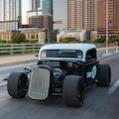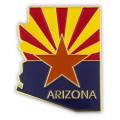If you have a ~400hp (or less) carb motor what pump are you running? Something as simple as https://www.summitracing.com/parts/s...36-1/overview/ ?
I plan on running the supplied 5/16 fuel & 1/4 return lines, and using a firewall-mounted bypass regulator and pressure gauge. Most seem to say the pump regulator is fine though, so I may skip that (and the return line).
There's more room for the pump at the rear, but I'd love to see where you've mounted yours..
- Home
- Latest Posts!
- Forums
- Blogs
- Vendors
- Forms
-
Links

- Welcomes and Introductions
- Roadster
- Type 65 Coupe
- 33 Hot Rod
- GTM Supercar
- 818
- Challenge Series
- 289 USRCC
- Coyote R&D
- Ask a Factory Five Tech
- Tech Updates
- General Discussions
- Off Topic Discussions
- Eastern Region
- Central Region
- Mountain Region
- Pacific Region
- Canadian Discussions
- Want to buy
- For Sale
- Pay it forward
-
Gallery

- Wiki-Build-Tech


 Thanks:
Thanks:  Likes:
Likes: 


 Reply With Quote
Reply With Quote


